2025.03.25
江戸時代から続く洒落心を現代に伝える
Conveying a sense of style passed down from the Edo Era to the modern day
東京さくらトラムの面影橋停留場、神田川沿いにある、風情のある建物が1914年(大正3年)に東京・新宿区西早稲田で創業した株式会社富田染工芸です。140年もの歴史とともに江戸小紋・江戸更紗を現在も手作業で染め続けています。
That elegant building you can see located near Omokagebashi Station of the Tokyo Sakura Tram line and along the Kanda River is Tomita Senkougi Co. Ltd.- founded in 1914 in the Nishi Waseda area of Shinjuku in Tokyo. Along with its 140 year history, today this company continues to dye Edo Komon designs and Edo Sarasa fabric by hand.
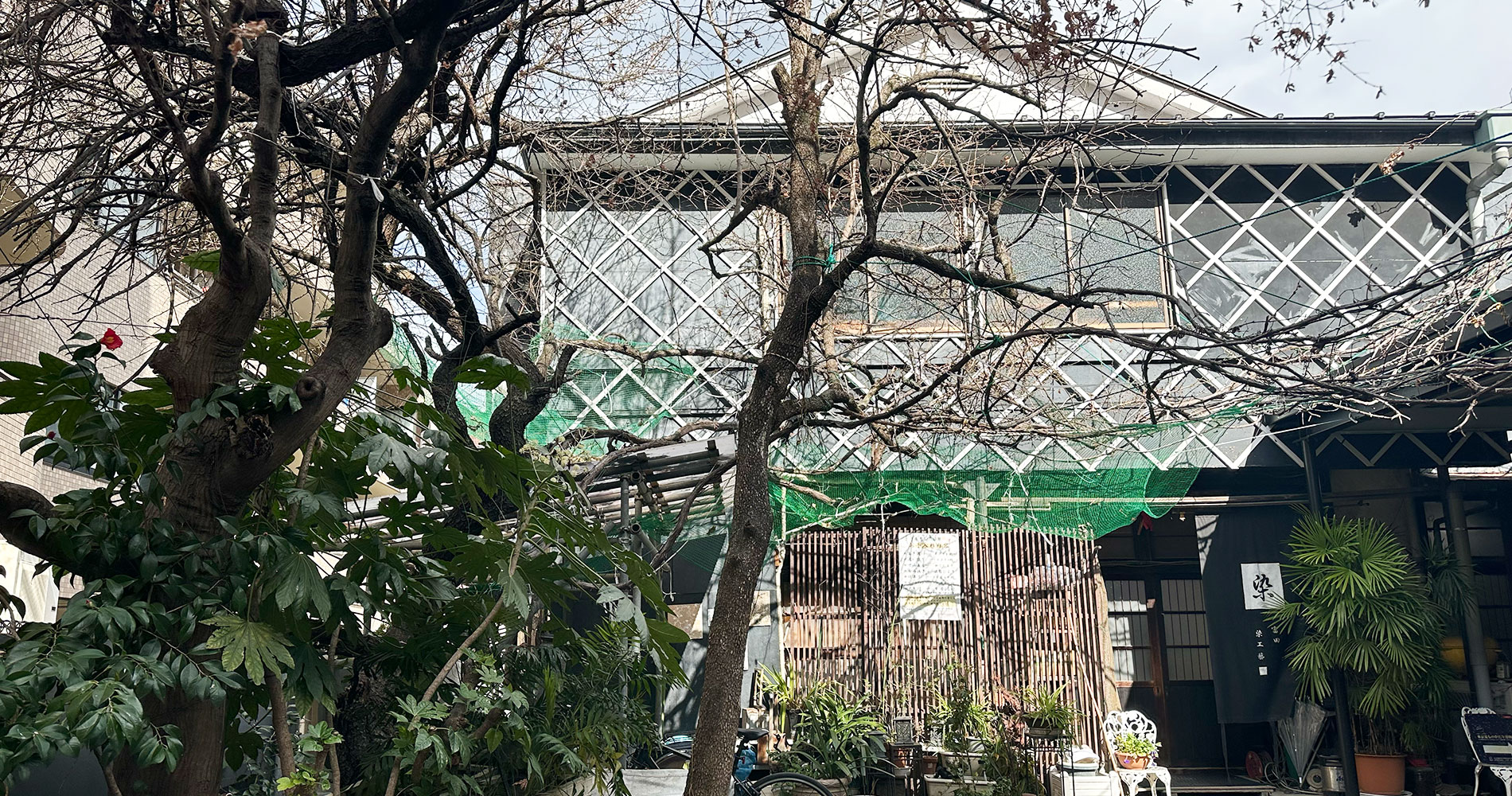
この日は、染色工芸士の野島さんに工房内を案内していただきました。
染色業が集まる新宿の工房は、「板場」や、染めた生地に色を定着させる「蒸箱」も昔ながらの形で残っています。工房にある伊勢型紙の数は、江戸小紋、江戸更紗をあわせると12万枚にも及ぶそう。
Today Mr.Nojima, a dye crafstman, takes the time to show us around his studio.
Studios in Shinjuku where dyeing businesses gather have wooden boards as well as steaming boxes that affix colos to the dyed fabrics – both in their older forms. The number of sheets of Ise Katagami paper in these workshops reaches 120,000 including both Edo Komon designs and Edo Sarasa fabric.
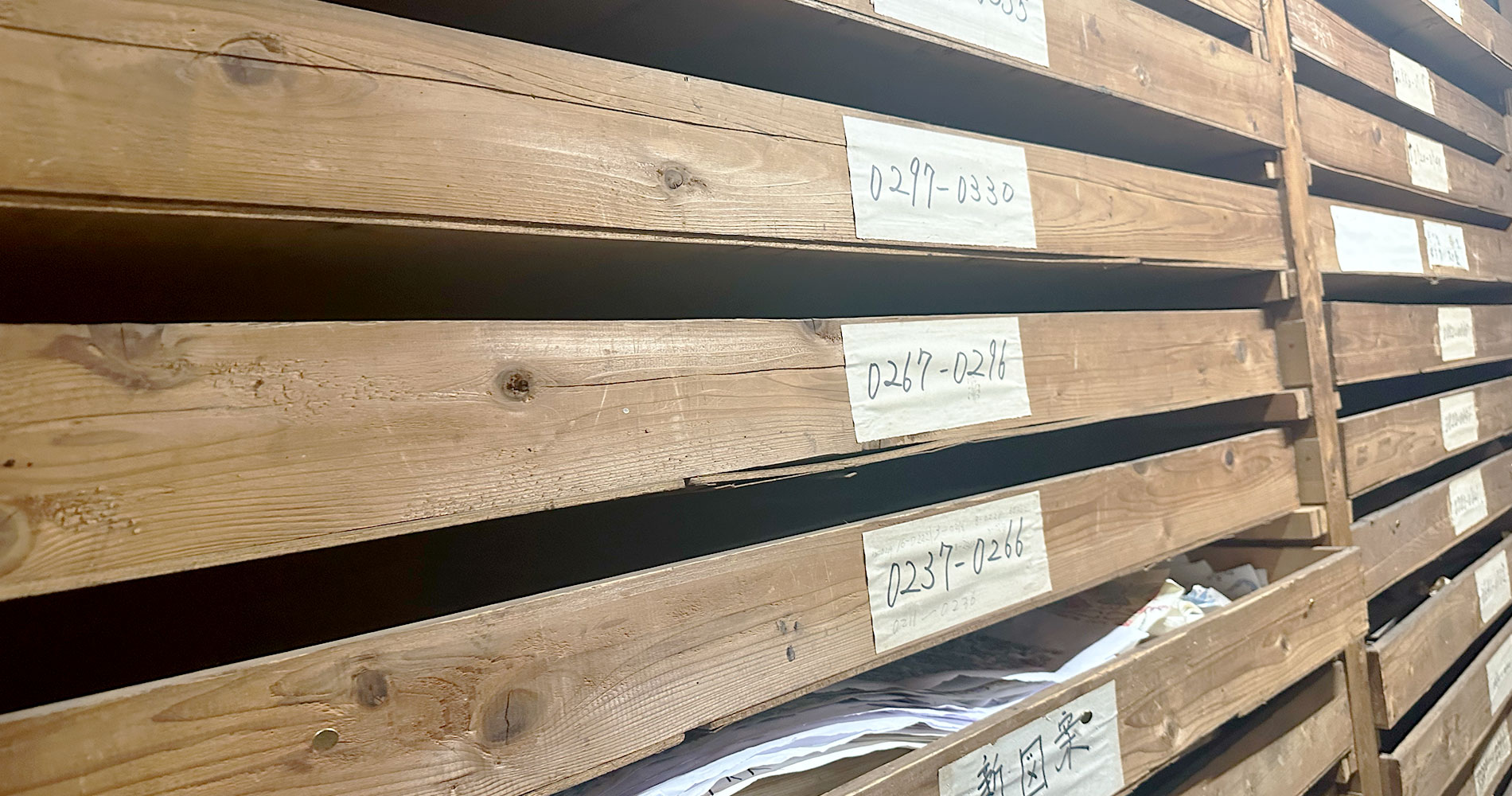
伊勢型紙。今では彫ることができない貴重な型紙も。
Ise Katagami paper.Includes valuable stencils that can’t be carved today.
職人の手作業から生まれる繊細さと美しさ
The fine detail and beauty born from the handwork of artisans
富田染工芸の染物は全工程を、今なお伝統的な染色技法を用い、職人の手作業で仕上げています。基本的に分業制で、それぞれの職人が自分の持ち場を担当しています。柄の細かさにもよりますが、完成するのに2か月ほどかかります。
Even now, the entire process for Tomita Senkougi uses traditional dyeing techniques and is made with artisan handwork. The work is basically divided up among artisans, each of whom are in charge of their own task. Depending on how elaborate the design is,fabrics typically take around 2 months to complete.
作業に使われる地色糊(色糊)は、もち粉と米ぬかを混ぜて蒸し、練ってから染料を入れることで調合しています。その絶妙な色合いは職人の経験と感覚から生み出されています。
The base color paste (color paste) used in this work consists of mixed and steamed sticky rice flour and rice bran. After being kneaded, they are blended by adding dyes. These brilliant colors are born from the experience and sensibility of artisans.
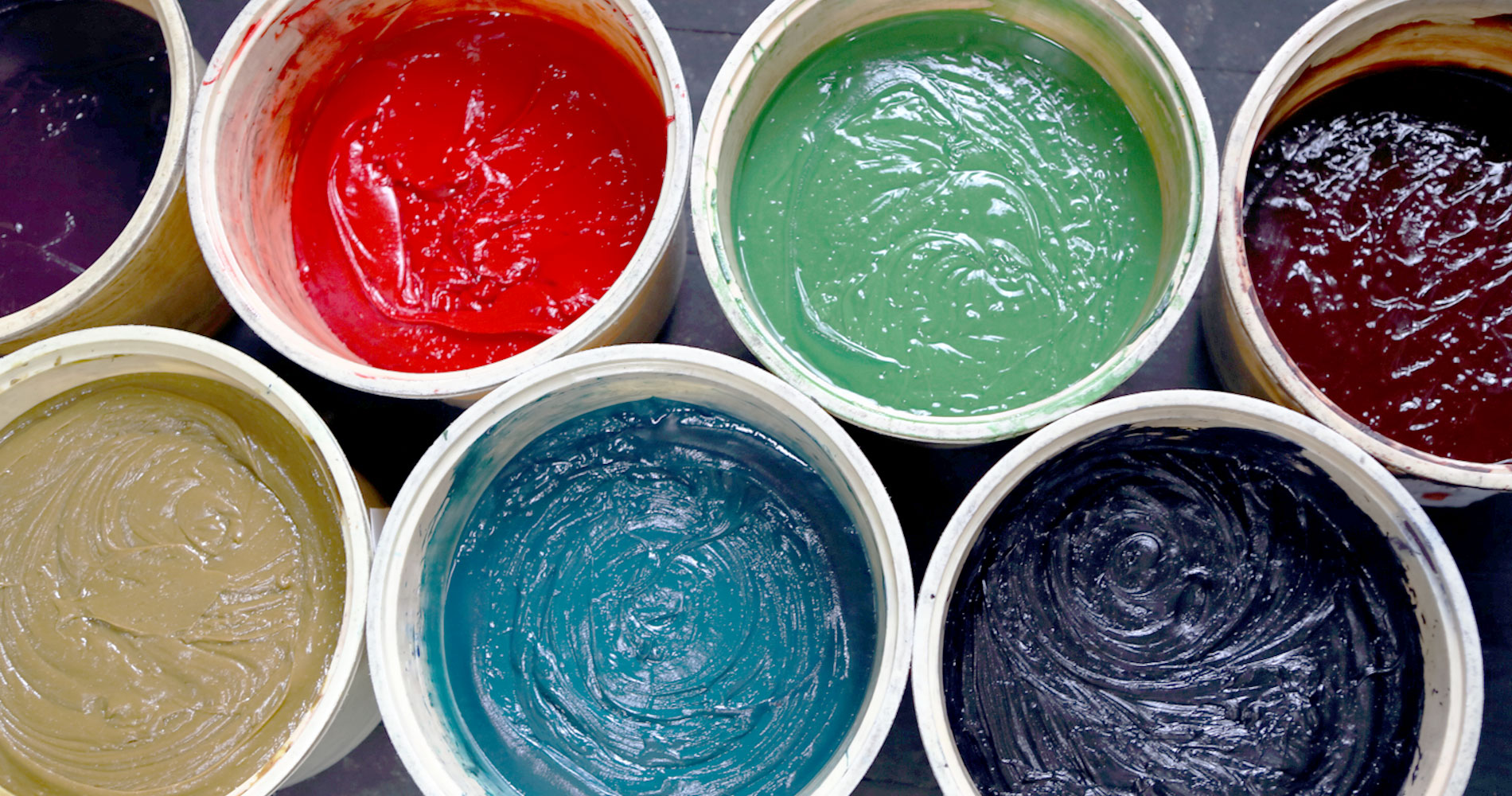
もち粉と米ぬかを混ぜて作られる地色糊(色糊)
Base color paste (color paste) made by mixing sticky rice flour and rice bran
和紙を柿の渋で張り合わせて作った地紙に図案を彫った型紙を使って柄を染め上げていくのが「型染め」です。江戸小紋に代表される小紋柄は2種類の色糊(いろのり)を使って染めています。
Stencil dyeing is the process of using stencils to dye patterns. These stencils have designs carved out on base paper made by binding Washi Japanese paper together with persimmon tannin. These designs, represented by Edo Komon designs, are dyed using two kinds of color pastes.
まず、もち粉と米ぬかに活性炭を混ぜた防染糊(目色糊)を使います。長板に張った白生地の上に型紙をのせ、ヘラを使って防染糊を下からまっすぐ上へと置いていきます。この「型付け」という工程で型紙に彫られた小紋柄の部分に防染糊が置かれて型付けされます。
次に、染料を入れた地色糊を使い、生地の地色を「しごき」という作業で染めていきます。
First, a resist paste (meironori paste) made by mixing sticky rice flour and rice bran with activated charcoal is used.The stencil is placed on white fabric stretched on a long board, and the resist paste is placed straight up from the bottom using a spatula. During this process, called stencil dyeing, the resist paste is placed and stenciled on the komon fabric design part carved out in the stencil paper. Next, the base color of the fabric is dyed in a process called “shigoki,” using base color paste with dye included.
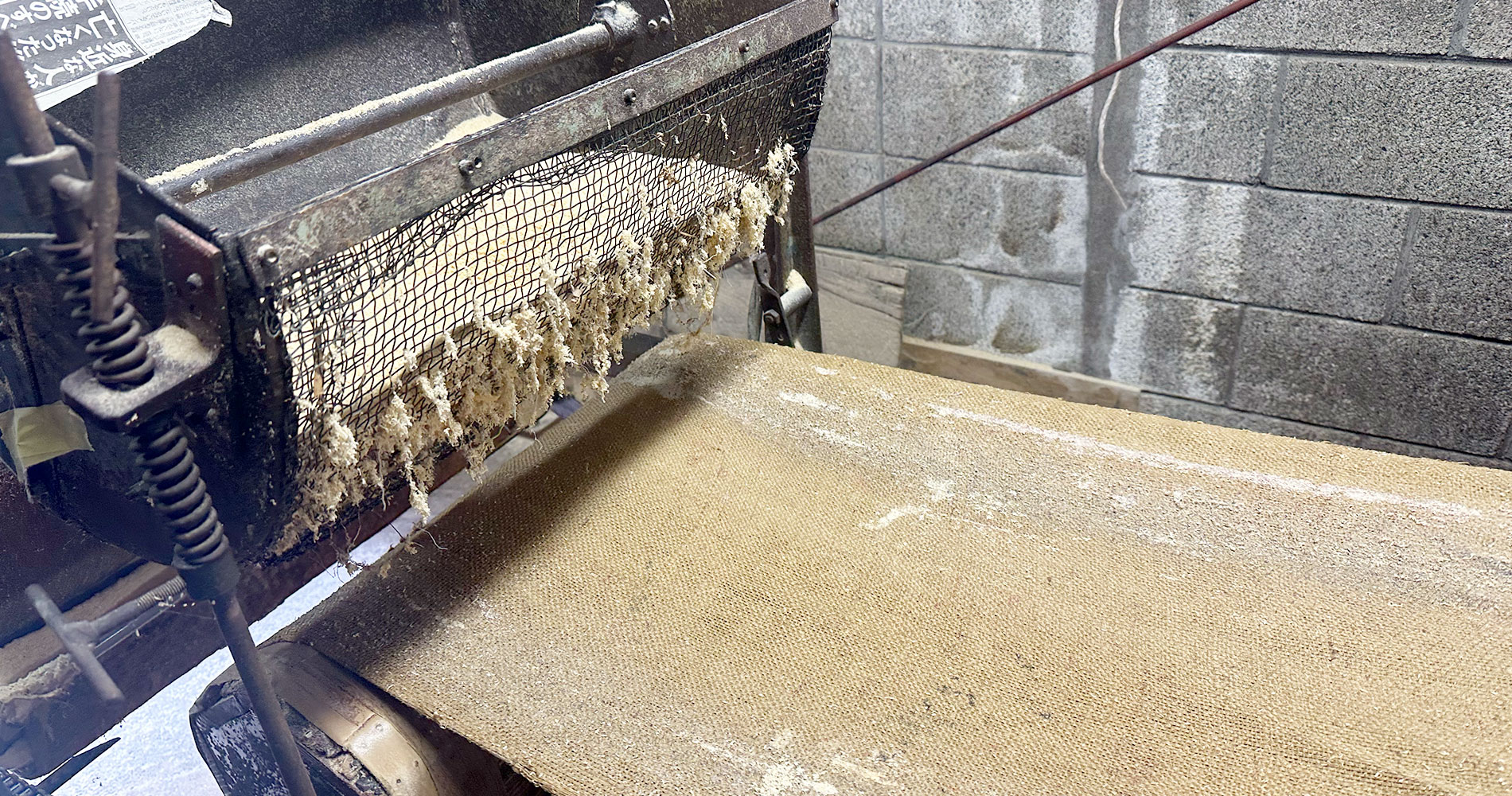
「しごき」で使う機械
The machine used in “shigoki” work
地色糊が乾かないうちに蒸箱に入れ、糊の中に入っている染料を生地に定着させる「蒸し」作業をし、余分な染料と糊を落とす「水洗い」に進みます。昭和38年までは前を流れる神田川で洗っていたそうですが、現在は地下水をくみあげて洗っています。最後に乾燥をさせてようやく完成となります。
The base color paste is placed in a steaming box before it dries, and steam is used to affix the dye in the paste to the fabric. Then the excess dye and paste is removed by washing them out with water. It is said that until 1963 these fabrics were washed in the Kanda River flowing in front of the company’s building, but now drawn groundwater is used for washing. Finally, the fabric is dried and completed.
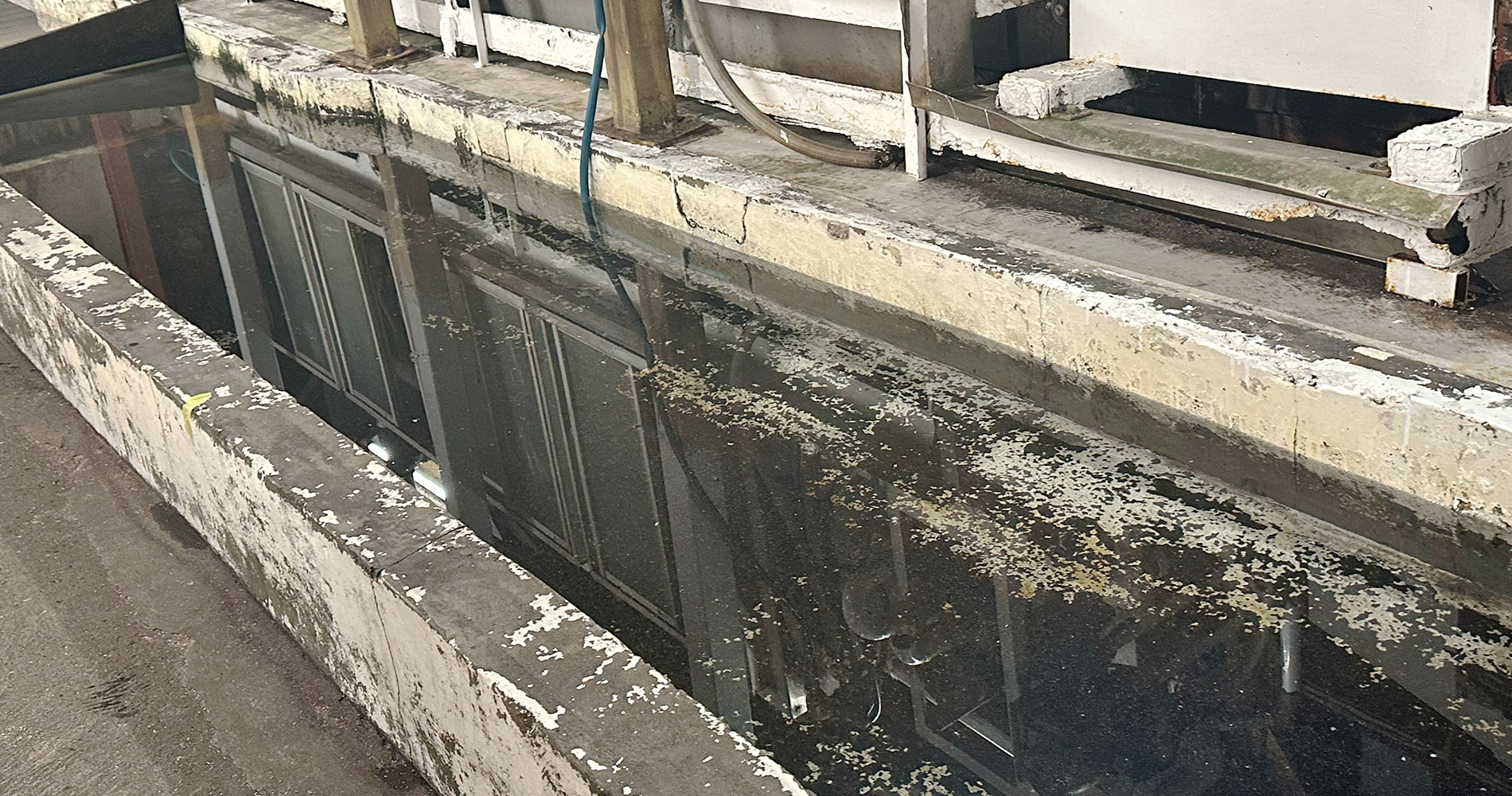
水洗いする場所
Water-washing place
このように職人が多くの時間と手間をかけた繊細で美しい染物は機械では決して再現できません。水洗いをしていた職人の方が、今では作れない柄や、その時代の流行の柄などが間近に見られるのがとても貴重な体験です、と言っていたのが印象的でした。
Machines cannot replicate these fine and beautiful dyed fabrics, which take artisans a lot of time and effort to create.It was impressive to hear these artisansm who washed these fabrics with water say that seeing these patterns which can’t be created now, as well as fashionable patterns of the era up close, is a valuable experience.
伝統的な技法を受け継ぎつつ、時代とともに進化を遂げる
Evolving with the times while inheriting traditional techniques
富田染工芸では伝統的な着物をはじめ、スカーフや日傘など現代のライフスタイルに合う製品も制作しています。話題になった「東京2020オリンピック・パラリンピック」の公式グッズである「風呂敷クロス」の染色も手掛けました。
Tomita Senkougi also makes products for our modern lifestyles such as scarves and parasols in additon to kimono. They were also involved in the dyeing for the much-talked about furoshiki cloths, official goods of the Tokyo 2020 Olympics and Paralympics.
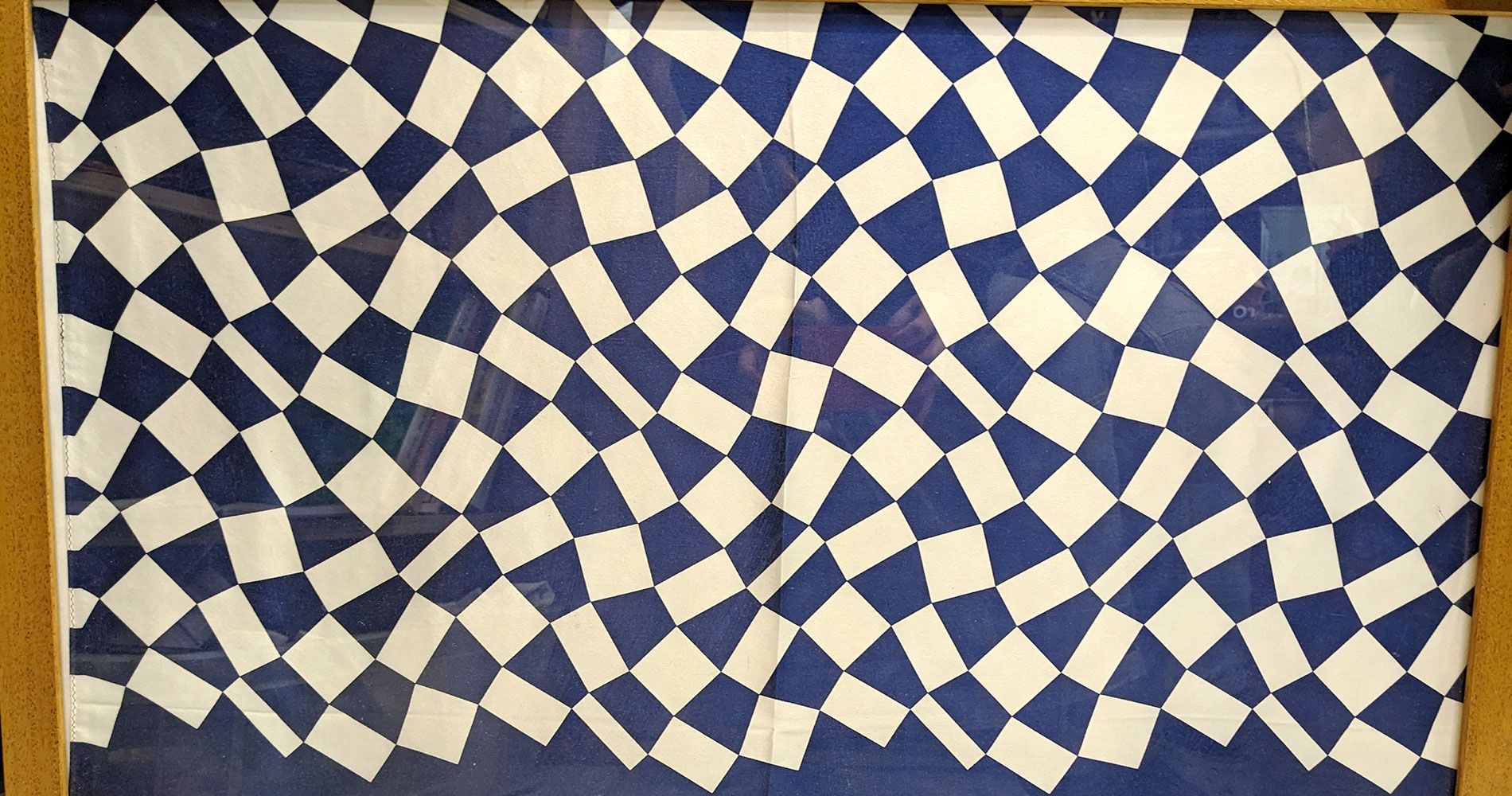
東京2020オリンピック・パラリンピックの公式グッズの風呂敷クロス。
Furoshiki cloth, an official product of the Tokyo 2020 Olympics and Paralympics.
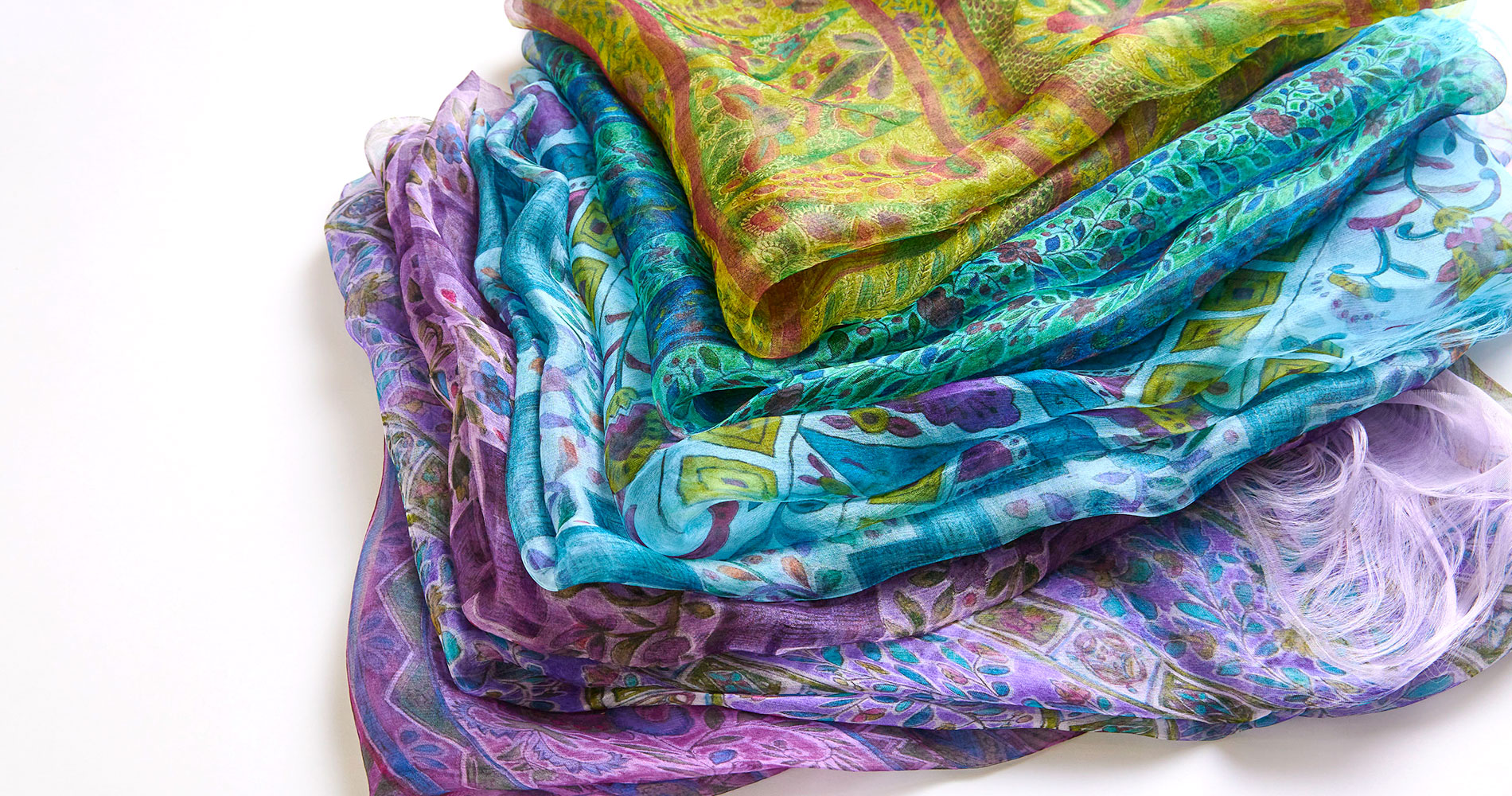
職人によっても柄や色の個性の出るストール。
Stoles with unique patterns and colors created by artisans.
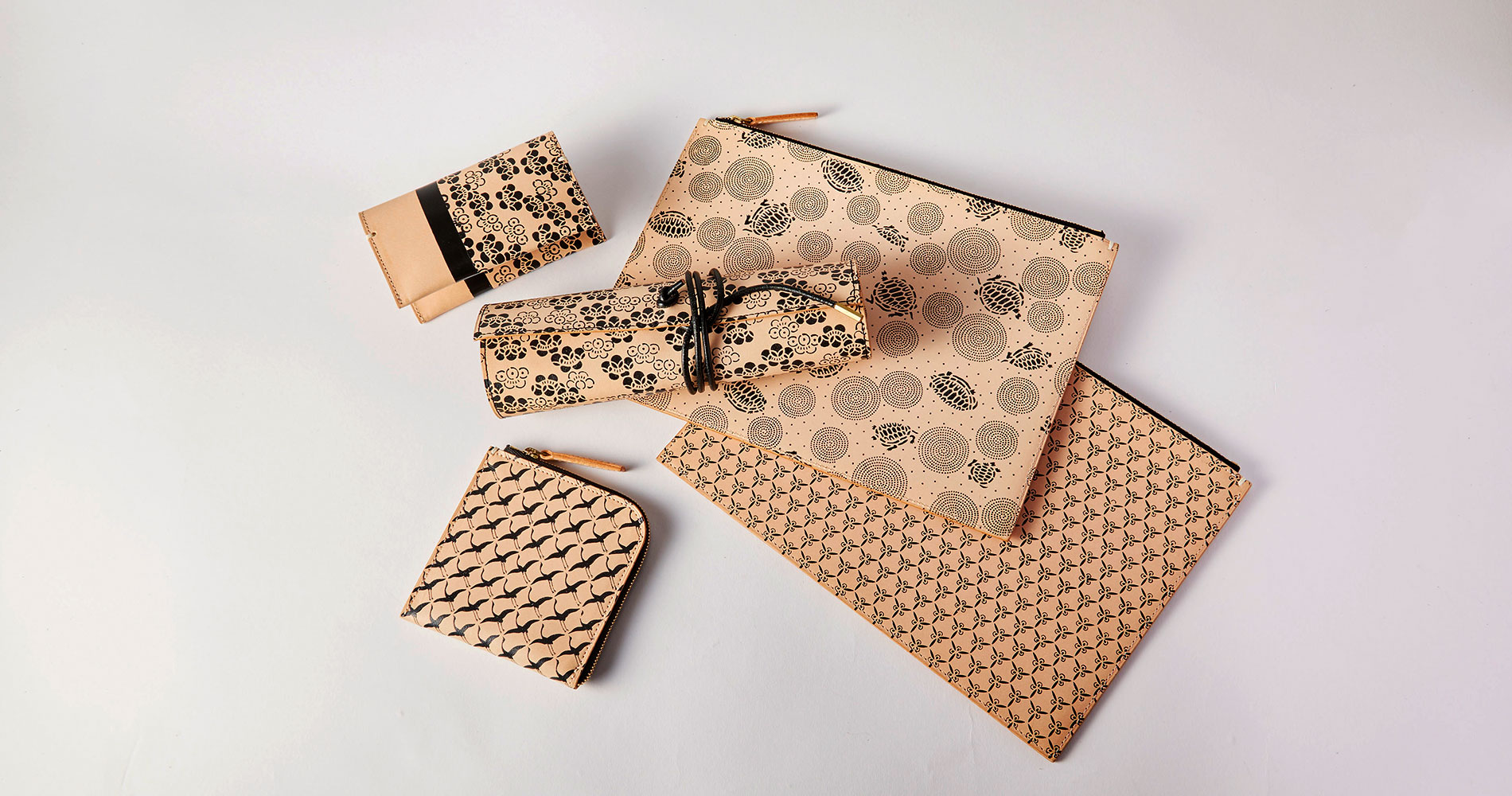
使用していくうちに味が出てくるヌメ小紋レザー。
Tanned Komon leather that gets better with use.
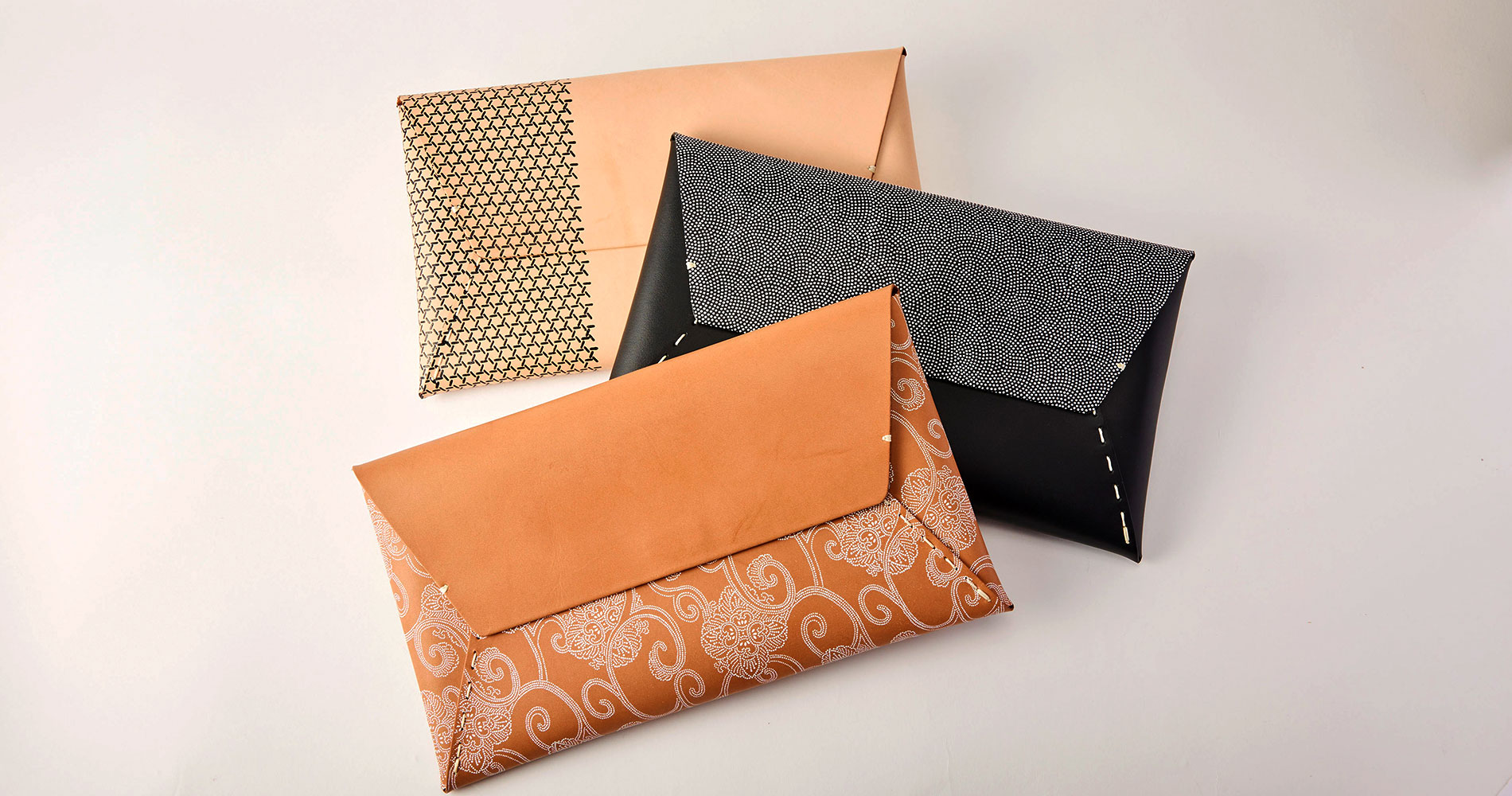
繊細で美しい柄が特徴の江戸小紋レザー。
Edo Komon leather with detailed and beautiful patterns.
5代目の富田さんは新たな挑戦を続けています。そのひとつである「SARAKICHI(さらきち)」は、着物の枠を超えたオリジナルブランドです。伝統的な文様をデジタル化することで、革や木材、タイルなど、従来の染色が難しかった素材にも染めが可能となり、革小物やスカーフ、ネクタイなど、現代のライフスタイルにも合う商品を制作しています。
Mr. Tomita, the 5th head of the company, continues to challenge himself. One such example is SARAKICHI, his original brand that goes beyond kimono frames. By digitizing traditional patterns, dyes can now be applied to materials that are difficult for existing dyes, including leather, wood, and tiles, enabling the production of products that fit our modern lifestyles, including small leather goods, scarves, and neckties.
伝統的な染めを体験できるワークショップも開催
Workshops that let participants experience traditional dyes
「多くの方に東京染小紋や江戸更紗を知ってもらい、伝統が続いてほしい」という思いで、江戸更紗や東京染小紋の技法を体験できるワークショップも開催しており、伝統工芸の技術を間近で学ぶことができる機会を提供しています。
The company is also holding workshops that let participants experience Tokyo somekomon dyeing method and Edo Sarasa fabric techniques, based on their desire for many more people to learn about Tokyo somekomon dyeing method and Edo Sarasa fabric. These workshops provide participants with an opportunity to learn traditional craft techniques up close.
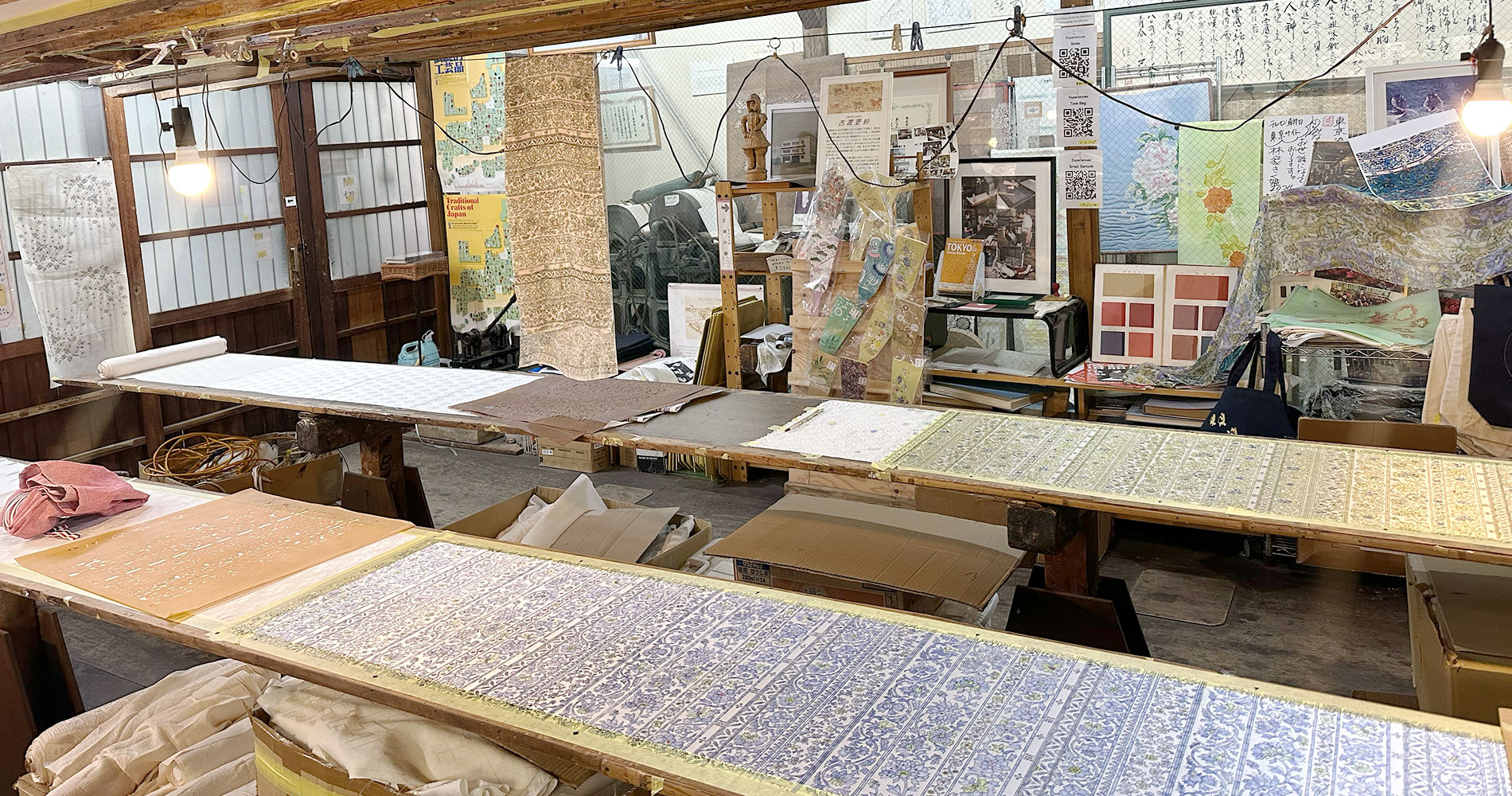
ワークショップが体験できる工房
Studio where participants can participate in the workshop
この日も職人さんに教えてもらいながら、オリジナルスカーフのワークショップが行われていました。染め方に個性が反映されるため、同じ型でも全く違った印象に仕上がります。
On this day, an original scarf workshop was being held where participants learned so much from an artisan. A person’s uniqueness is reflected in the dyeing method, meaning each finished item gives off a completely different impression with the same form.
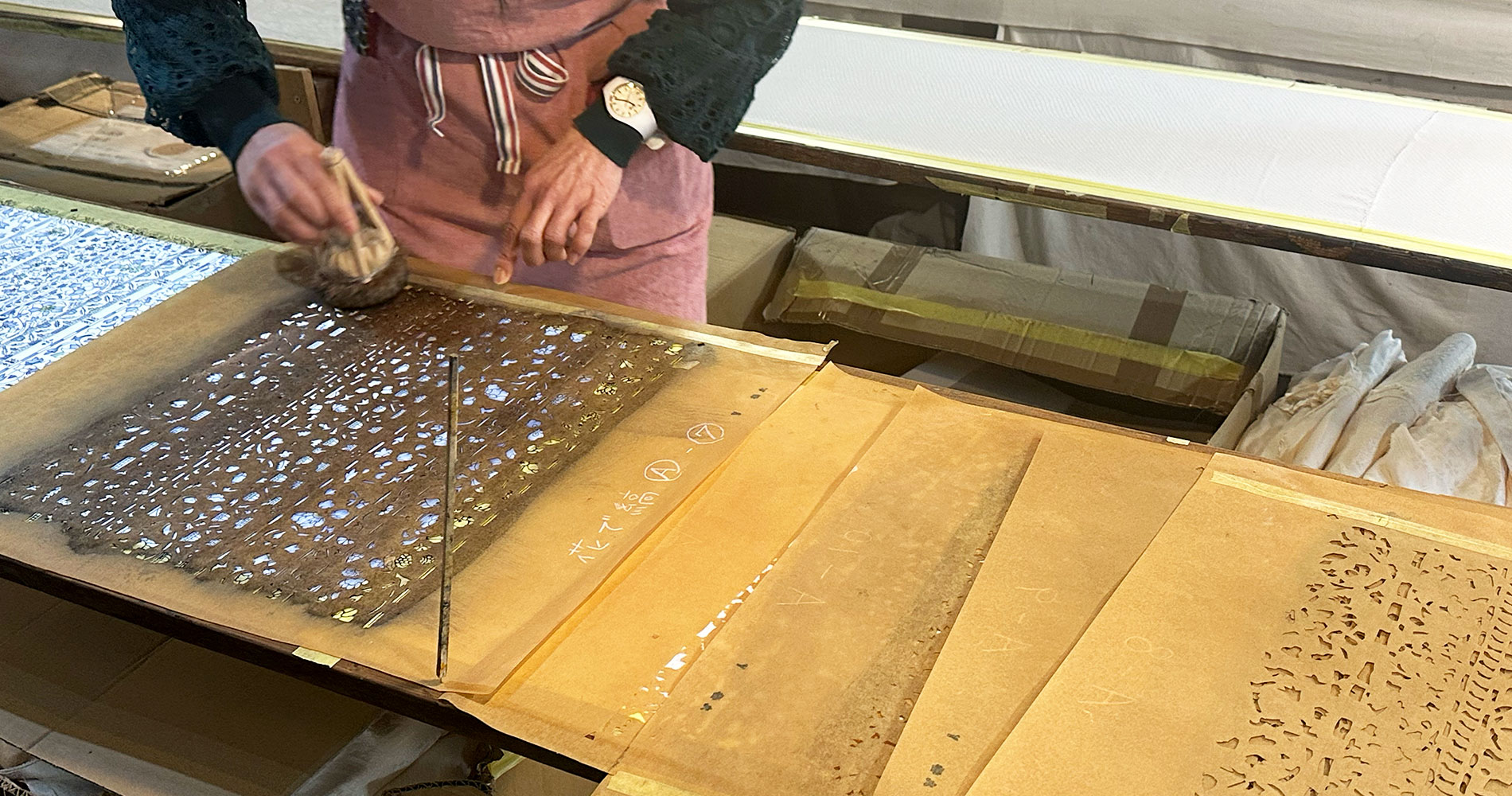
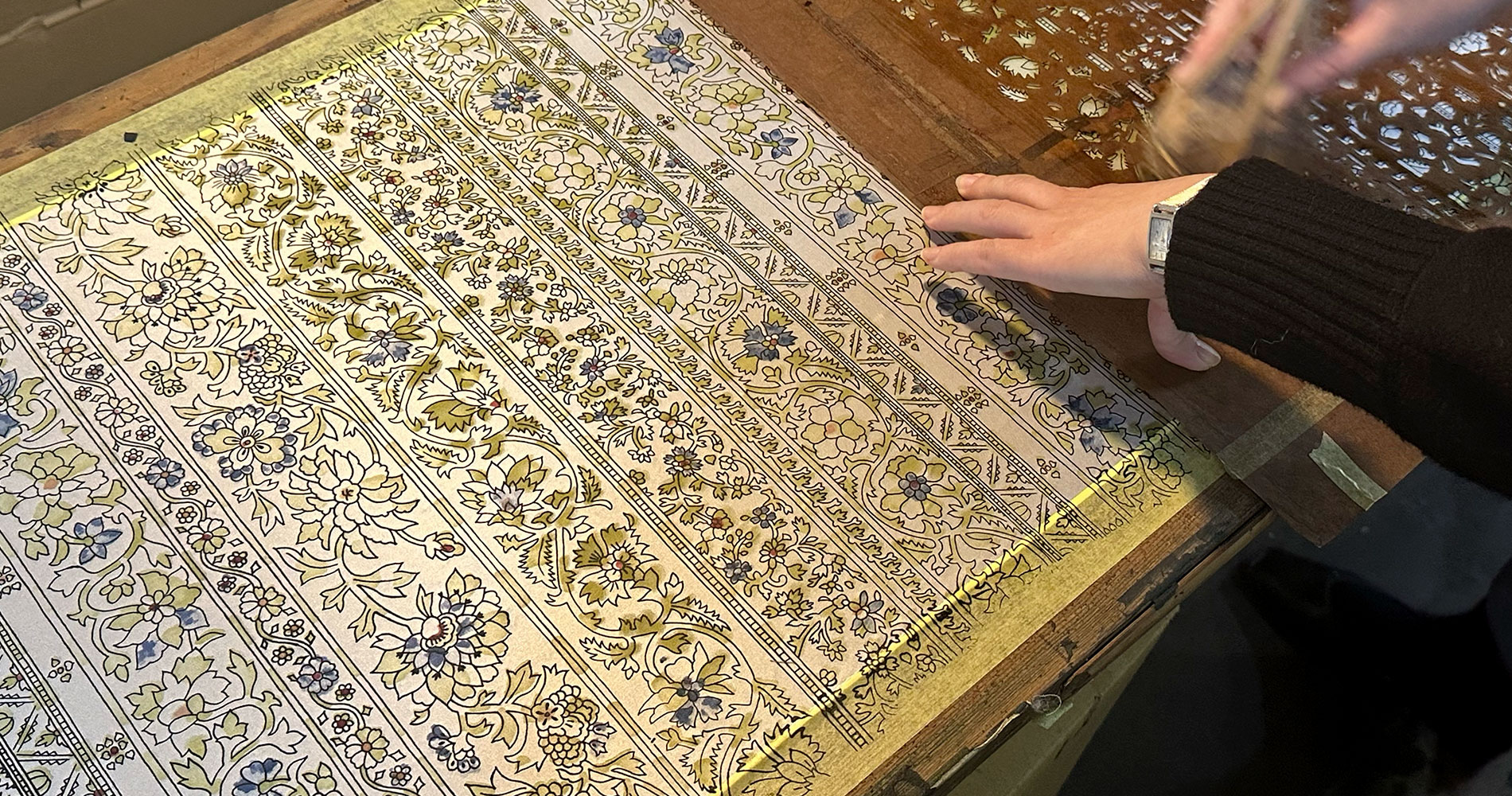
また、富田染工芸は日本だけでなく海外への発信にも力を入れており、フランスのパリにアトリエを開設し、現地での個展や生地の販売なども行っています。
江戸時代から続く伝統の技を継承しながら、新しいことにも挑戦している富田染工芸。桜のきれいな神田川沿いを散歩がてら、ぜひ訪れてみてください。
Tomita Senkougi is pouring their efforts into sharing their work with both Japan and overseas. They have established an atelier in Paris, France, where they hold private exhibitions and sell fabrics on-site.
Tomita Senkougi continues to attempt new things while inheriting traditional techniques from Japan’s Edo Era. It is well worth a visit when strolling around the Kanda River with its beautiful cherry blossoms.







